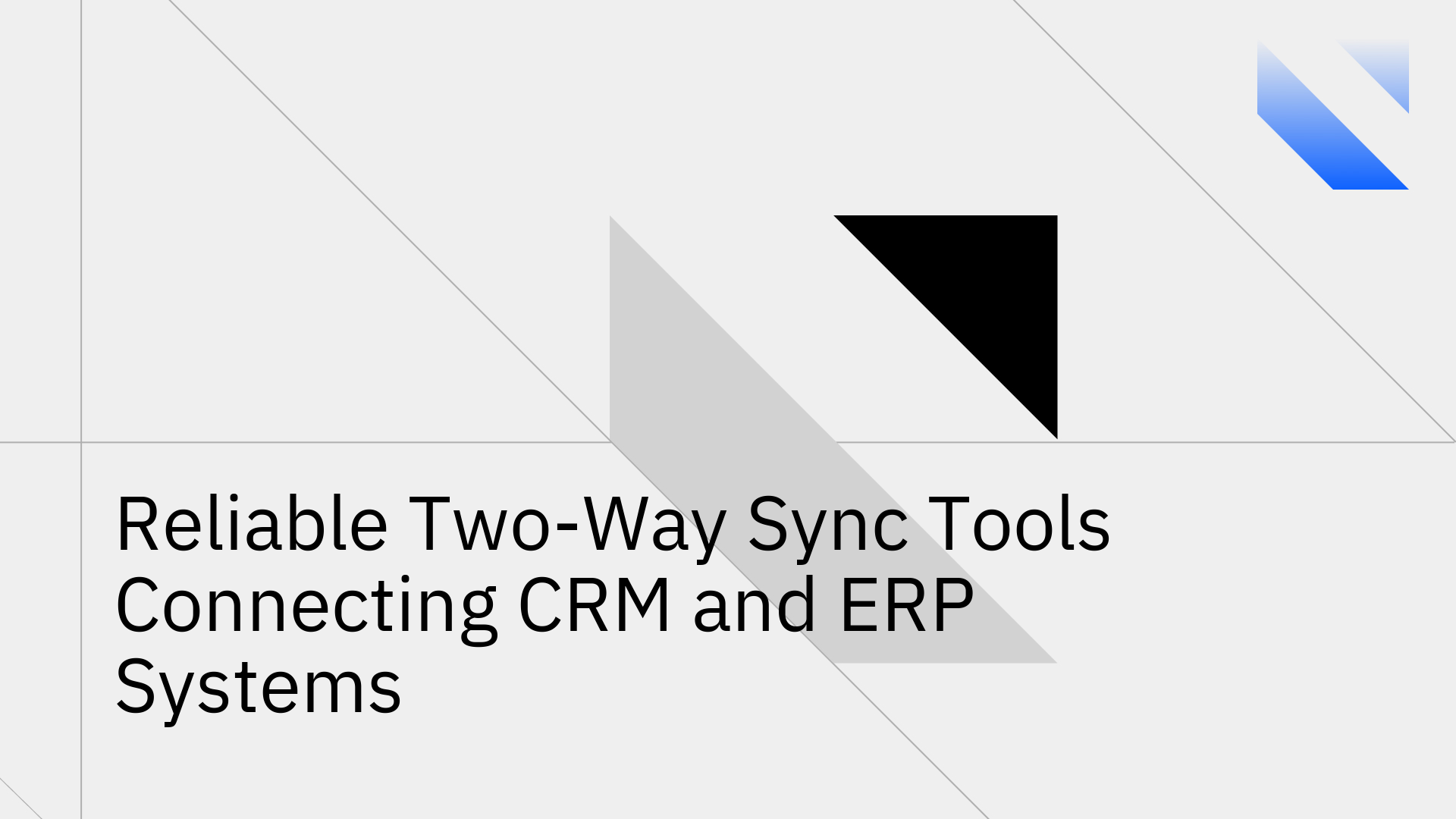

Data silos between Customer Relationship Management (CRM) and Enterprise Resource Planning (ERP) systems create significant operational friction.
When sales teams in Salesforce lack visibility into financial data from NetSuite, or when finance cannot access real-time deal updates from the CRM, the consequences are immediate: inaccurate forecasting, delayed order fulfillment, manual reconciliation errors, and a fragmented view of the customer lifecycle.
Achieving seamless two way sync between CRM and ERP systems is a complex engineering problem that is often underestimated. Common approaches fall short in critical areas:
These methods fail to provide the real-time data synchronization necessary for modern business operations, leaving organizations with latent, inconsistent, and unreliable data across their most critical applications.
True bi-directional sync software for business is not merely two one-way syncs running in parallel. It is a sophisticated data integration pattern where two or more datasets are treated as a single entity [1]. A change made in one system is instantly and accurately reflected in the other, with built-in logic to handle conflicts and ensure data integrity [2].
Key characteristics of a true bi-directional sync solution include:
For organizations that cannot compromise on data consistency between their operational systems, a specialized solution is required. Stacksync is an integration platform engineered specifically for real-time, two-way sync between CRMs, ERPs, and databases. It is designed to eliminate the complexity of API integrations and provide a reliable, scalable, and automated data backbone for the enterprise.
Unlike generic tools, Stacksync focuses on the mission-critical use case of keeping operational systems perfectly aligned. It provides automated data sync between applications by abstracting away the underlying API complexities of systems like Salesforce, HubSpot, NetSuite, and SAP [3].
With a no-code interface, a bi directional sync for Salesforce and a database can be configured in under five minutes, a task that would otherwise consume months of engineering effort [4].
Stacksync addresses the core technical challenges of CRM-ERP integration with a focused, powerful feature set:
Stacksync provides granular control over the synchronization process, allowing businesses to tailor the integration to their exact needs. Users can:
Implementing a reliable two-way sync tool like Stacksync delivers immediate and compounding benefits, empowering both technical and business teams.
1. Guaranteed Data Consistency and Integrity: By establishing a single, unified view of customer and financial data, organizations eliminate discrepancies and the need for manual data reconciliation. This ensures that all teams are operating from the same playbook, improving decision-making accuracy across the board [8].
2. Enhanced Operational Efficiency: When sales can see payment statuses in the CRM and finance can view deal pipelines in the ERP, processes are streamlined. Order fulfillment is faster, invoicing is more accurate, and customer support has a complete 360-degree view of the customer relationship.
3. Empowered and Focused Engineering Teams: Stacksync removes the burden of building and maintaining \"dirty API plumbing.\" This frees valuable engineering resources to focus on building core products and features that create a competitive advantage, rather than on non-differentiating integration infrastructure.
4. Effortless Scalability and Reliability: As your business grows, so does your data volume. Stacksync is built to scale from thousands to millions of records without requiring architectural changes. Its enterprise-ready platform, complete with advanced monitoring and issue management, ensures that your critical data flows remain reliable and performant.
For any organization looking to sync CRM with ERP systems, the choice of integration technology is a critical architectural decision. By moving beyond brittle custom code and latent iPaaS solutions to a purpose-built, real-time bi-directional sync platform like Stacksync, businesses can build a resilient and efficient operational foundation for growth.